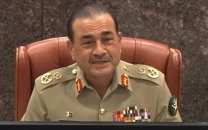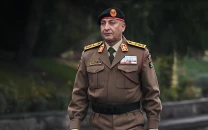Of numbers and stories
Numbers alone can't capture human stories—empathy is needed to understand the real people behind the statistics.

Towards the end of a calendar year, we are often surrounded by numbers. The events of the year are often cast in quantitative terms. The percentages of growth, the frequencies and the recurrences, and the losses we suffer are packaged in neat numbers, compared to years before. There are graphs, trends, numbers in a bold font, hoping to capture attention, aiming to etch the figure in the mind. I, too, have read some of these numbers that have been reported recently. For example, within the last twelve months, how many may have left the country (e.g. over 700,000 left the country for education and work and over 10,000 Pakistanis were arrested in Iran trying to go on the long journey to enter Europe). But numbers can be cold, disconnected and sterile. For example, imagine if the number of those who left was not seven hundred thousand, but 750,000. From a distance, that difference perhaps would not be noticeable - but we are talking about another 50,000 people. Would we not notice if a town of 50,000 simply disappeared and was erased from the map? Instead of homes and businesses there was emptiness? Imagine instead of 10,000 people arrested in Iran, as they try to find a way to Europe, the number was twice as large - would we think differently about what makes people take extraordinary risks? Most likely it would not make any difference in how we think, reflect, or analyse.
Numbers are useful perhaps for policy, but not empathy. They are good for comparison, but not compassion. A healthy society cannot simply function on high-level data. It certainly needs to think in broad population terms, but it also needs to recognise that each number that contributes to a statistic is a real person, a person who is just as important as any of us. Good stories - whether through reporting or creative works - are essential to understanding who we are and how we are shaped by our surroundings. They are reminders of our own imperfections and complexities, of moral dilemmas and difficult choices. They may focus on an individual, but they allow us to connect with many. They can also bring hope at a time when there is not a lot of it to go around. Hope in human decency, hope in kindness, hope in humanity. Hope may not be quantifiable in the same way as the number of migrants are - but hope is certainly needed to heal those who are hurting.
So what does this mean in real and practical terms? It does not mean that we should not look at numbers, or avoid indicators or trends. It simply means that we should be able to shake off our inertia, and resist abstractions. This means that we should recognise the critical value of humanities in our curricula. This means that we should read the lived experiences. This means that we give voice to those who are denied the opportunity to share.
Large numbers, as the ones that are often quoted in the news, are hard to fathom, and beyond a certain point, lose meaning. But they do not have to. We can find meaning when we get to see what make someone abandon hope. We can find meaning when we move away from inherited assumptions about people to hearing their real stories, their hopes, aspirations, pain and joy. We can find meaning when we can imagine ourselves in their lives - recognising that our privilege may in fact not be permanent, understanding that there is not much difference between any of us.
When it comes to new years' resolutions, having more empathy is as good as any.
















COMMENTS
Comments are moderated and generally will be posted if they are on-topic and not abusive.
For more information, please see our Comments FAQ